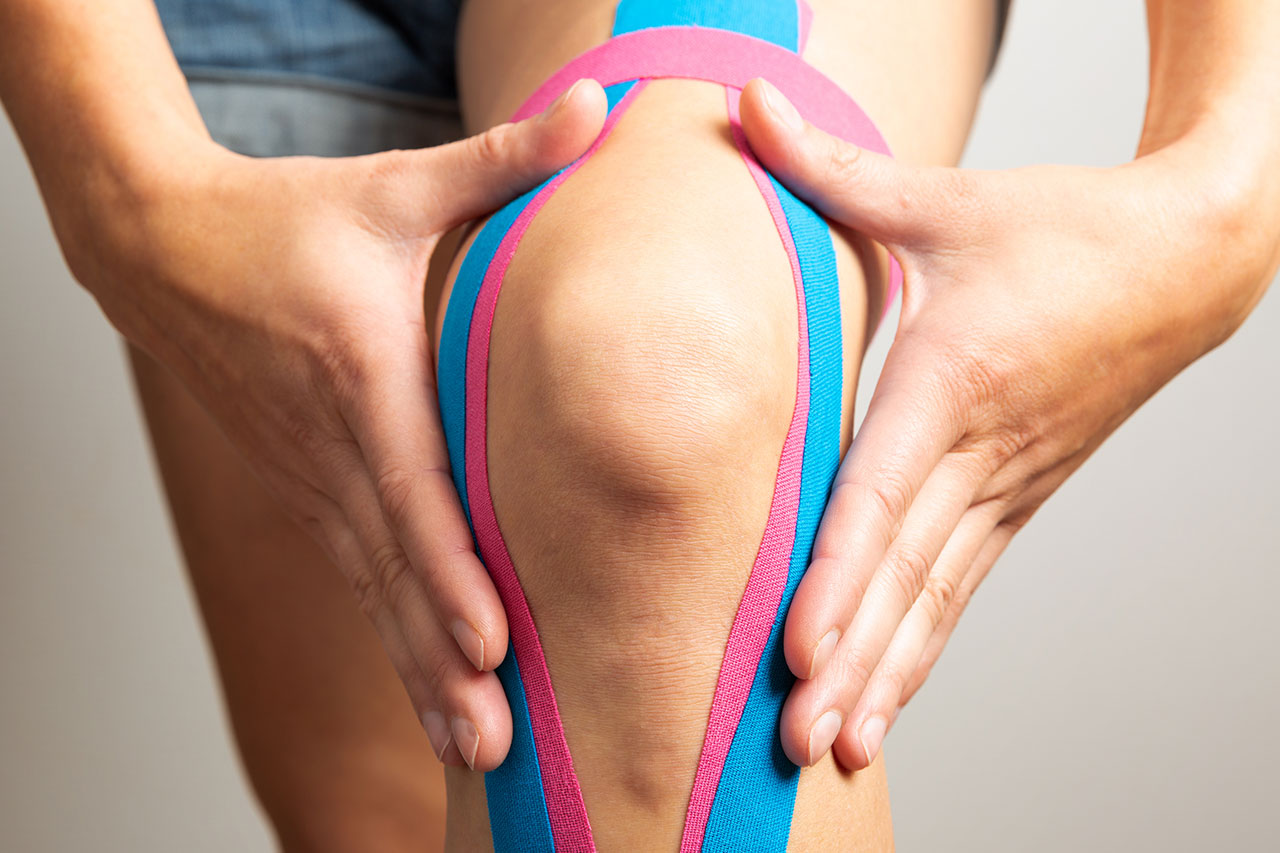Non-Surgical Treatments for Orthopedic Sports Injuries
Athletes and active people experience orthopedic injuries every year. Sprains and strains are two of the most common sports-related injuries. Although most orthopedic injuries heal with rest, therapy, and time, some injuries require intervention. In essence, the best way to recover from an orthopedic injury is to treat the problem before surgery is necessary.

Non-surgical treatments for orthopedic sports injuries have become more popular over the last decade. In order to manage their pain and improve their mobility, athletes often seek non-surgical treatment options such as:
-
blood flow restriction training
-
cupping
-
laser therapy
-
kinesiology therapeutic taping
-
trigger point dry needling
What is blood flow restriction therapy?
Blood flow restriction therapy (BFRT) is a technique that is utilized for improving muscle function in appropriate patients. The system works through the application of a specialized and low risk tourniquet system to a limb. This creates an environment in the muscle tissue to allow strength improvements with low loads. There are a variety of theories about why these strength gains occur including anabolic system response, cellular swelling, or metabolite build up.
Non-surgical conditions that can benefit from blood flow restriction therapy include:
-
chronic pain
-
shoulder impingement
-
tendonitis
-
rotator cuff tears
-
hip impingement
-
knee pain
-
patellofemoral pain
-
ankle sprains
-
and ankle/foot instability
What is therapeutic cupping?
Therapists use cupping as a technique of tissue distraction release. The cups are glided across different areas of skin to lift and separate tissue. It enhances the release of the interfaces between the neural tissues, fascia, skin, ligaments, muscles, and tendons. Some patients with myofascial pain report resolution of pain after just one session. Some evidence suggests that cupping techniques are effective for chronic neck pain, low back pain and fibromyalgia. It has also been shown to relax muscles, release trigger points, improve lymphatic flow, increase local circulation, and release scar tissue adhesions.
Cupping is used for pain relief, musculoskeletal injuries such as sprains, back injuries, and inflammation.
What is laser therapy?
Laser therapy is a medical treatment that uses focused light to stimulate a process called photo biomodulation (PBM). During PBM, photons enter the tissue and interact with the cytochrome C complex within the mitochondria. This interaction triggers a biological cascade of events that leads to an increase in cellular metabolism which can decrease pain as well as accelerate the healing process.
Laser therapy is used to treat acute orthopedic conditions and chronic conditions, including:
-
sprains and strains
-
a whiplash injury
-
muscular back pain
-
cervical or lumbar radiculopathy
-
tendinitis
-
osteoarthritis
-
rheumatoid arthritis
-
frozen shoulder
-
neck and back pain
-
epicondylitis
-
carpal tunnel syndrome
-
tendinopathy
-
fibromyalgia
-
and plantar fasciitis
What is kinesiology therapeutic taping?
Kinesiology therapeutic taping is a dynamic splinting method used for the rapid relief and prevention of pain in soft tissue injury, post-surgical rehabilitation, performance enhancement, and athletic training. Dr. Kenzo Kase developed the tape with the goals of providing support without limiting movement, which is a common attribute of standard athletic tapes.
Kinesiology therapeutic taping is used to treat:
-
achilles tendonitis
-
it band friction
-
patellofemoral syndrome
-
shoulder impingement
-
cervicogenic headaches
-
excessive swelling
-
most sprains
-
most sprains
-
most tendonitis
-
most postural deficits
-
and most coordination deficits
What is trigger point dry needling?
Trigger point dry needling is used in a variety of clinical conditions to provide pain relief. Traditionally, trigger points are thought to be the end result of a muscular contraction, hence the name myofascial trigger points. More recent research has refuted this theory and indicates that trigger points can form when there is misalignment or damage sustained to muscles and their surrounding connective tissue structures. Trigger points are often referred to as taut bands of skeletal muscle fibers within a muscle. The goal with dry needling is to release or inactivate the trigger point(s) so that normal functioning can resume.
Trigger point dry needling is used to treat:
-
ankle pain
-
elbow pain
-
hip pain
-
knee pain
-
shoulder pain, including rotator cuff disorders
-
spinal pain, including cervical pain, thoracic pain, lumbar pain, and postural dysfunction
-
plantar fasciitis
-
and other myofascial/muscle injuries
Find the best non-surgical treatment options in Maryland, Northern Virginia, and D.C. for orthopedic sports-related injuries.
Getting back to 100% after a sports-related orthopedic injury can require more than rest, ice, compression, and elevation. Non-surgical treatments such as blood flow restriction training, cupping, laser therapy, kinesiology therapeutic taping, and trigger point dry needling might help get you back to your active lifestyle. Schedule an appointment to learn how the experts at The Centers for Advanced Orthopaedics can help.

